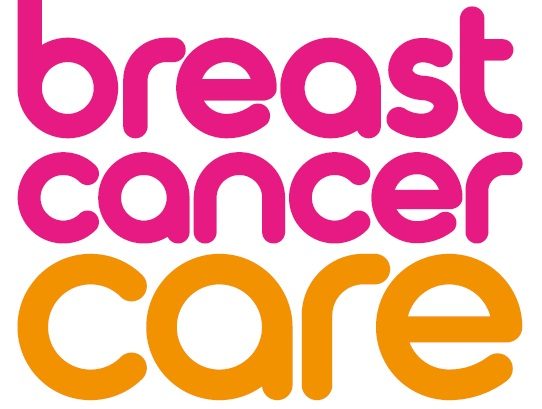Breast Cancer
Breast cancer is a kind of cancer that develops from breast cells.
Breast cancer usually starts off in the inner lining of milk ducts or the lobules that supply them with milk. A malignant tumor can spread to other parts of the body. A breast cancer that started off in the lobules is known as lobular carcinoma, while one that developed from the ducts is called ductal carcinoma.
The vast majority of breast cancer cases occur in females.
Breast cancer is the most common invasive cancer in females worldwide. It accounts for 16% of all female cancers and 22.9% of invasive cancers in women. 18.2% of all cancer deaths worldwide, including both males and females, are from breast cancer.
Breast cancer rates are much higher in developed nations compared to developing ones. There are several reasons for this, with possibly life-expectancy being one of the key factors – breast cancer is more common in elderly women; women in the richest countries live much longer than those in the poorest nations. The different lifestyles and eating habits of females in rich and poor countries are also contributory factors, experts believe.
The anatomy of a female breast
A mature human female’s breast consists of fat, connective tissue and thousands of lobules – tiny glands which produce milk. The milk of a breastfeeding mother goes through tiny ducts (tubes) and is delivered through the nipple.
The breast, like any other part of the body, consists of billions of microscopic cells. These cells multiply in an orderly fashion – new cells are made to replace the ones that died.
In cancer, the cells multiply uncontrollably, and there are too many cells, progressively more and more than there should be.
Cancer that begins in the lactiferous duct (milk duct), known as ductal carcinoma, is the most common type. Cancer that begins in the lobules, known as lobular carcicoma, is much less common.
- Chest wall. 2. Pectoralis muscles. 3. Lobules (glands that make milk). 4. Nipple surface. 5. Areola. 6. Lactiferous duct tube that carries milk to the nipple. 7. Fatty tissue. 8. Skin.
Causes of breast cancer
1) Getting older
The older a woman gets, the higher is her risk of developing breast cancer; age is a risk factor. Over 80% of all female breast cancers occur among women aged 50+ years (after the menopause).
2) Genetics
Women who have a close relative who has/had breast or Ovarian cancer are more likely to develop breast cancer. If two close family members develop the disease, it does not necessarily mean they shared the genes that make them more vulnerable, because breast cancer is a relatively common cancer.
The majority of breast cancers are not hereditary.
3) A history of breast cancer
Women who have had breast cancer, even non-invasive cancer, are more likely to develop the disease again, compared to women who have no history of the disease.
4) Having had certain types of breast lumps
Women who have had some types of benign (non-cancerous) breast lumps are more likely to develop cancer later on. Examples include atypical ductal hyperplasia or lobular carcinoma in situ.
5) Dense breast tissue
Women with more dense breast tissue have a greater chance of developing breast cancer.
6) Estrogen exposure
Women who started having periods earlier or entered menopause later than usual have a higher risk of developing breast cancer. This is because their bodies have been exposed to estrogen for longer. Estrogen exposure begins when periods start, and drops dramatically during the menopause.
7) Obesity
Post-menopausal obese and overweight women may have a higher risk of developing breast cancer. Experts say that there are higher levels of estrogen in obese menopausal women, which may be the cause of the higher risk.
8) HRT (hormone replacement therapy)
Both forms, combined and estrogen-only HRT therapies may increase a woman’s risk of developing breast cancer slightly. Combined HRT causes a higher risk.
Symptoms
.The first symptoms of breast cancer are usually an area of thickened tissue in the woman’s breast, or a lump. The majority of lumps are not cancerous; however, women should get them checked by a health care professional.
Women who detect any of the following signs or symptoms should tell their doctor
- A lump in a breast
- A pain in the armpits or breast that does not seem to be related to the woman’s menstrual period
- Pitting or redness of the skin of the breast; like the skin of an orange
- A rash around (or on) one of the nipples
- A swelling (lump) in one of the armpits
- An area of thickened tissue in a breast
- One of the nipples has a discharge; sometimes it may contain blood
- The nipple changes in appearance; it may become sunken or inverted
- The size or the shape of the breast changes
- The nipple-skin or breast-skin may have started to peel, scale or flake.
HOMOEOPATHIC TREATMENT
Homoeopathic medicines helps in reducing the size of lump, symptoms like pain and discharge from nipples can be reduced .Homoeopathy helps patient in early as well as late stages.
The Homeopathy Clinic in Delhi and Mumbai have Cancer specialists and can help those who are suffering from breast cancer by giving homeopathic treatment.

